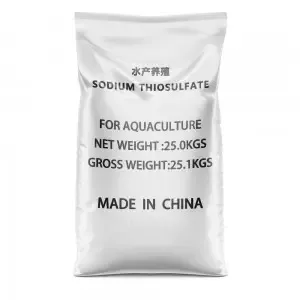



sodium hydroxide production plant
Sodium Hydroxide Production Plant An Overview
Sodium hydroxide, commonly known as caustic soda, is a pivotal chemical in various industries, including textiles, paper, soap, and detergents. The production of sodium hydroxide primarily occurs in chemical plants designed to optimize efficiency, safety, and sustainability. This article explores the key components, processes, and considerations associated with a sodium hydroxide production plant.
Production Methods
The predominant method for producing sodium hydroxide is through the electrolysis of sodium chloride (NaCl) solution, also known as brine. This electrolysis process can be conducted using three primary methods the diaphragm cell process, the mercury cell process, and the membrane cell process.
1. Diaphragm Cell Process This method involves the use of a porous diaphragm that separates the anode and cathode compartments. When brine is electrolyzed, chlorine gas is released at the anode, while hydrogen is produced at the cathode, along with sodium hydroxide in the solution. The diaphragm helps prevent the mixing of chlorine gas and sodium hydroxide, allowing for easier collection and purification.
2. Mercury Cell Process In this method, mercury serves as a cathode, and sodium is formed in the amalgam state with mercury. The sodium is then reacted with water to produce sodium hydroxide and hydrogen gas. While this method is effective, it raises environmental concerns due to the toxicity of mercury and its potential for pollution.
3. Membrane Cell Process This is the most modern and environmentally friendly method for producing sodium hydroxide. It utilizes an ion-exchange membrane to selectively transport sodium ions while preventing the crossover of chlorine and hydroxide ions. This method not only reduces energy consumption but also minimizes the environmental impact compared to the mercury cell process.
Key Components of the Plant
A sodium hydroxide production plant is comprised of several essential components
- Brine Preparation Unit This unit prepares concentrated sodium chloride solution, ensuring optimal salinity for the electrolysis process.
sodium hydroxide production plant

- Electrolysis Cell The heart of the production plant, this unit facilitates the electrolysis of brine
. Depending on the method chosen, the configurations of the cells may vary.- Gas Handling System Chlorine and hydrogen gases produced during electrolysis must be carefully managed. The plant typically includes scrubbing systems to remove impurities and ensure the safe handling of these gases.
- Concentration and Evaporation Unit After electrolysis, the sodium hydroxide solution is often concentrated through evaporation processes to achieve the desired concentration for industrial applications.
- Storage and Packaging The final product needs to be stored and packaged in appropriate containers to ensure stability and safety during transportation.
Environmental and Safety Considerations
Sodium hydroxide production poses certain environmental and safety challenges. The chlorine gas produced is highly hazardous, requiring stringent controls to prevent releases that could harm workers or the surrounding community. Additionally, adherence to regulations concerning wastewater treatment and emissions is essential to minimize environmental impact.
Implementing advanced technologies and best practices can significantly influence the sustainability of sodium hydroxide production. For instance, employing energy-efficient electrolysis methods, utilizing renewable energy sources, and recycling waste materials can all help reduce the overall carbon footprint of the production process.
Conclusion
The sodium hydroxide production plant stands as a critical facility within the chemical industry, contributing significantly to the supply of this essential compound. By utilizing modern electrolysis methods and adhering to stringent environmental and safety standards, producers can meet the growing demand while minimizing their ecological impact. With the ongoing advancements in technology and a growing emphasis on sustainability, the future of sodium hydroxide production appears promising, aligning industry practices with global environmental goals.
-
Why Sodium Persulfate Is Everywhere NowNewsJul.07,2025
-
Why Polyacrylamide Is in High DemandNewsJul.07,2025
-
Understanding Paint Chemicals and Their ApplicationsNewsJul.07,2025
-
Smart Use Of Mining ChemicalsNewsJul.07,2025
-
Practical Uses of Potassium MonopersulfateNewsJul.07,2025
-
Agrochemicals In Real FarmingNewsJul.07,2025
-
Sodium Chlorite Hot UsesNewsJul.01,2025










